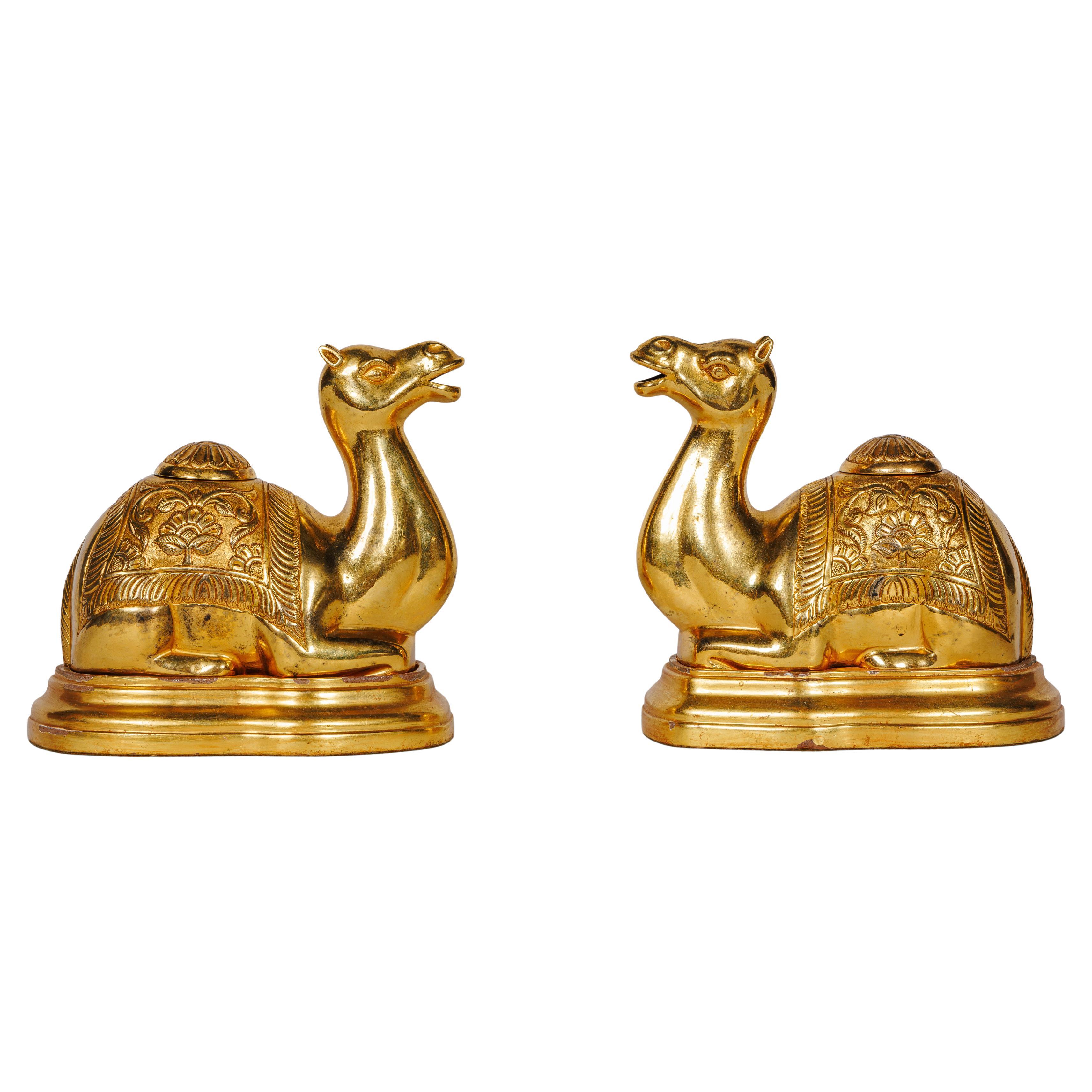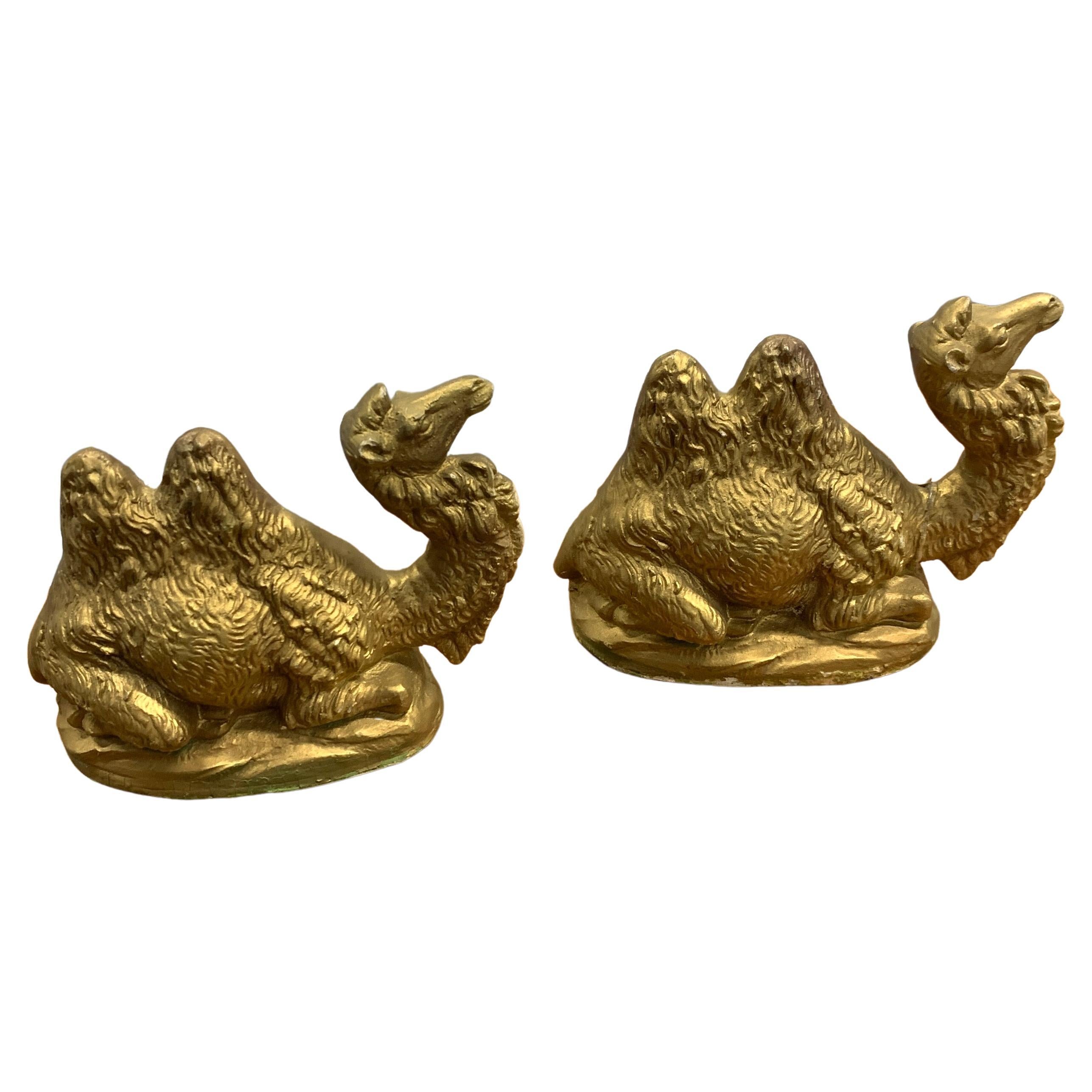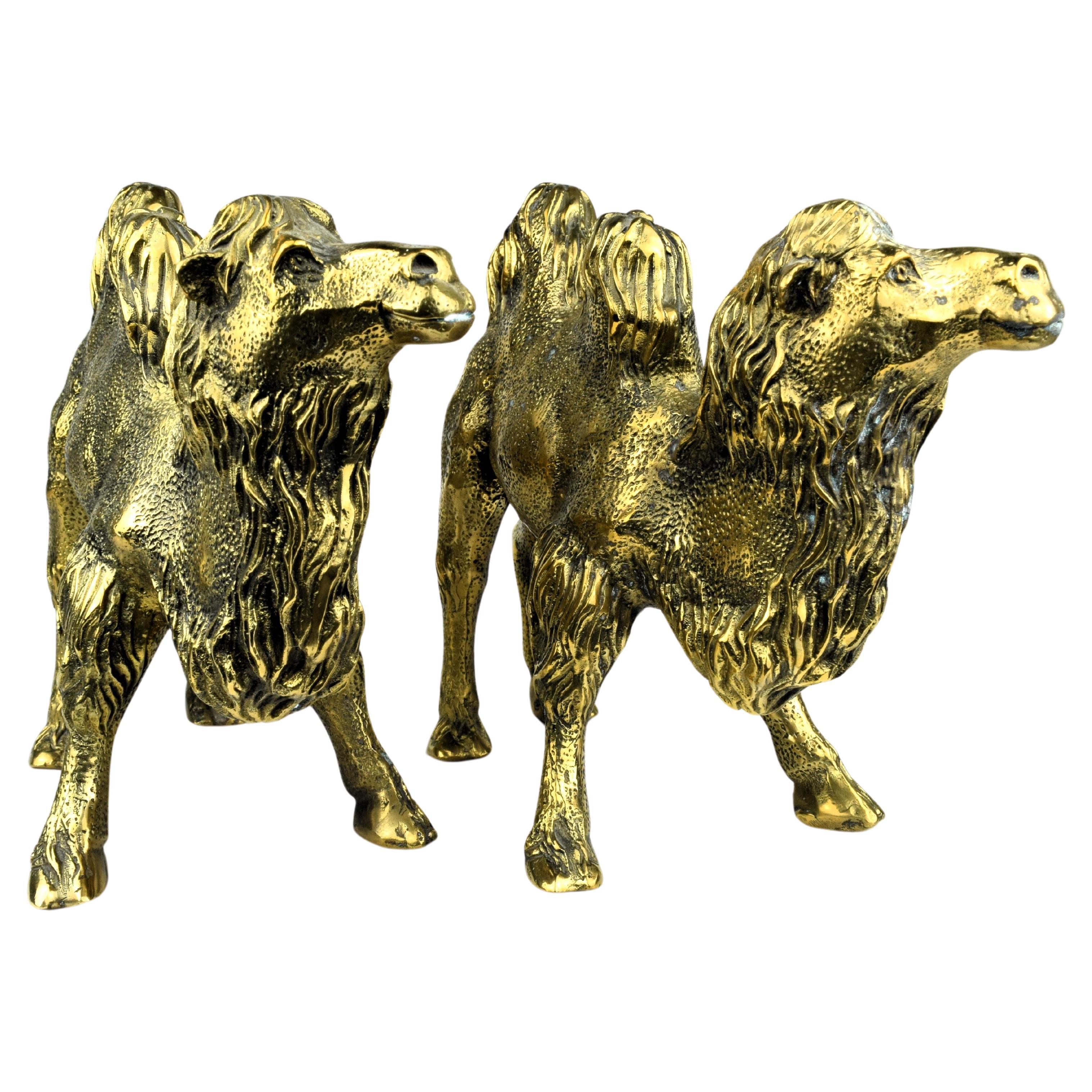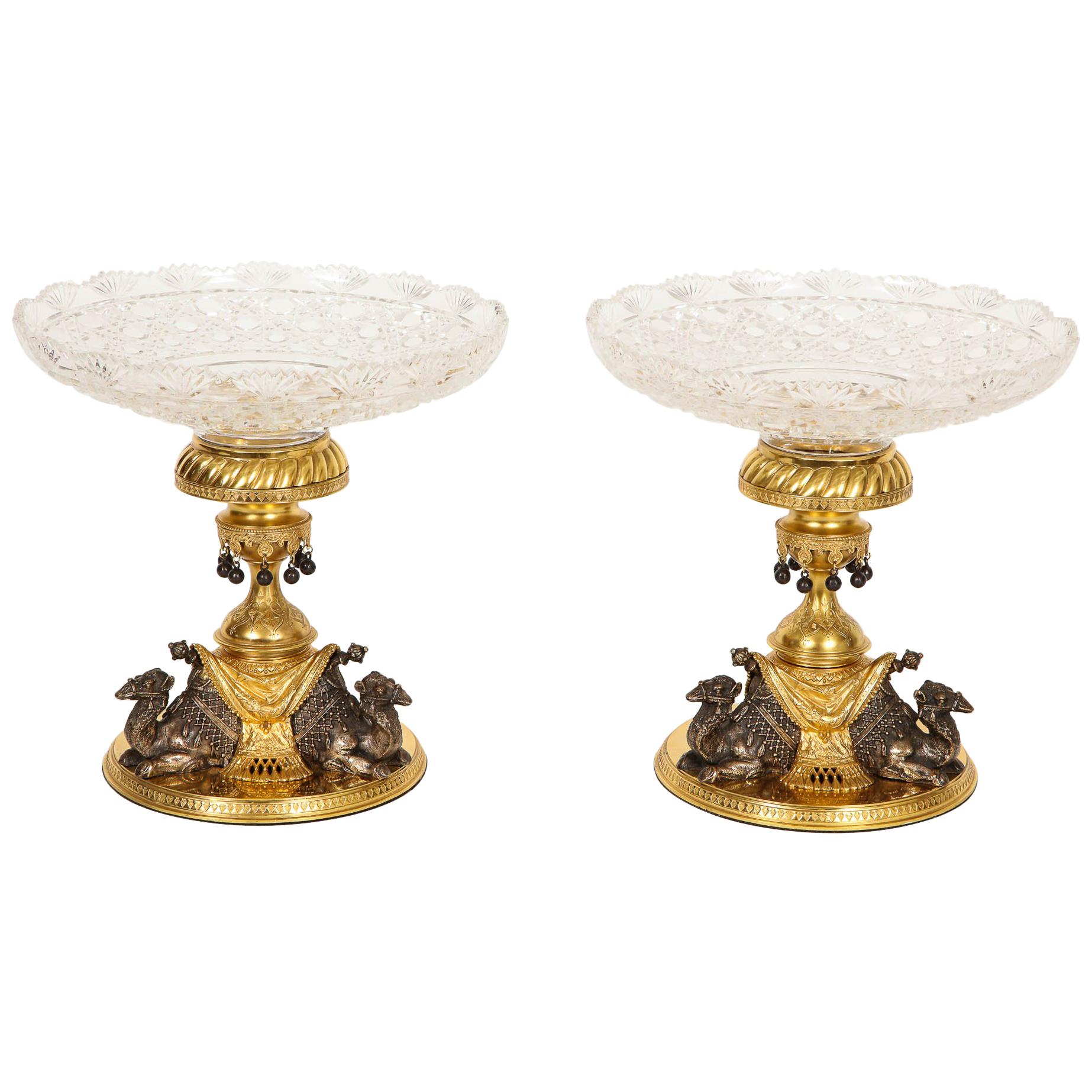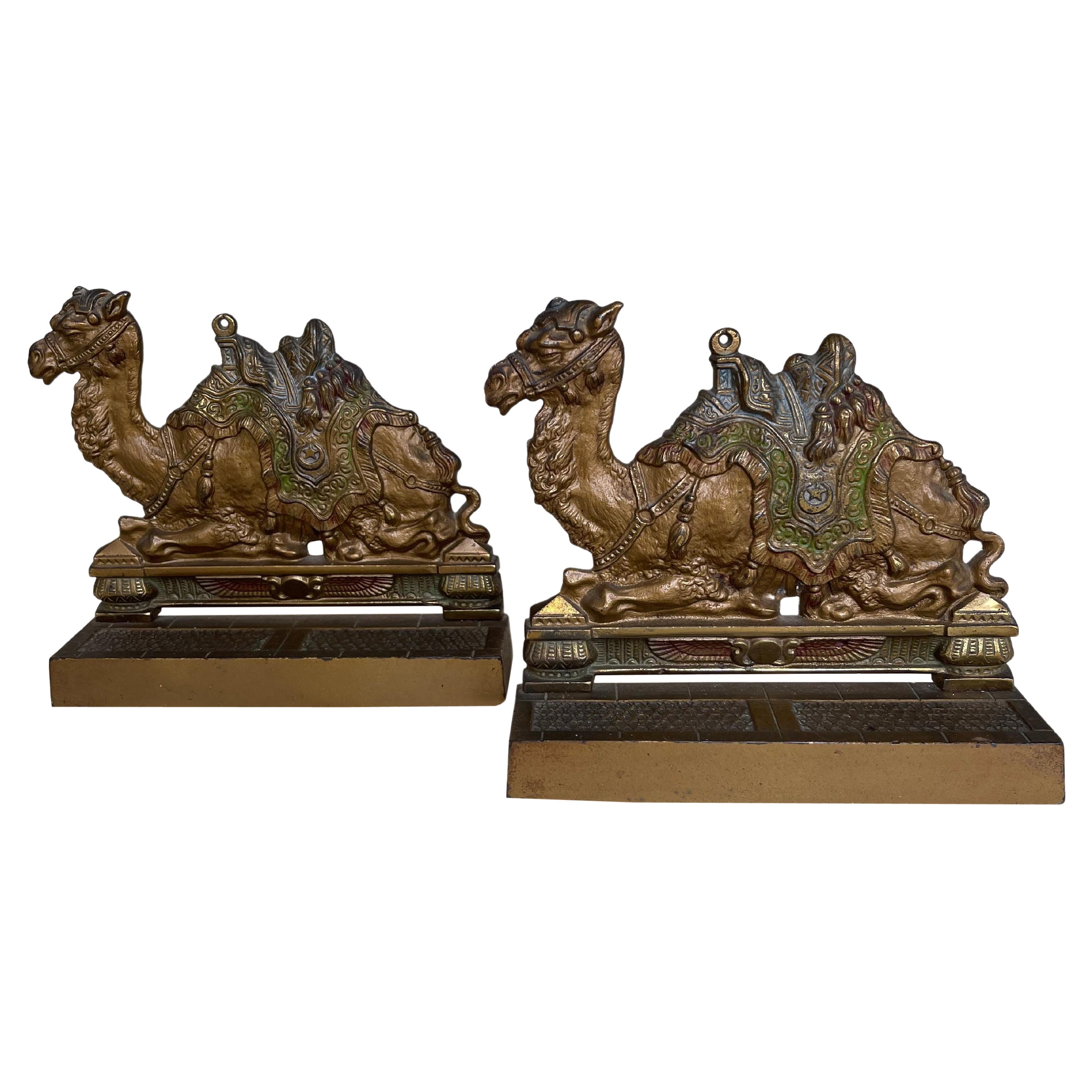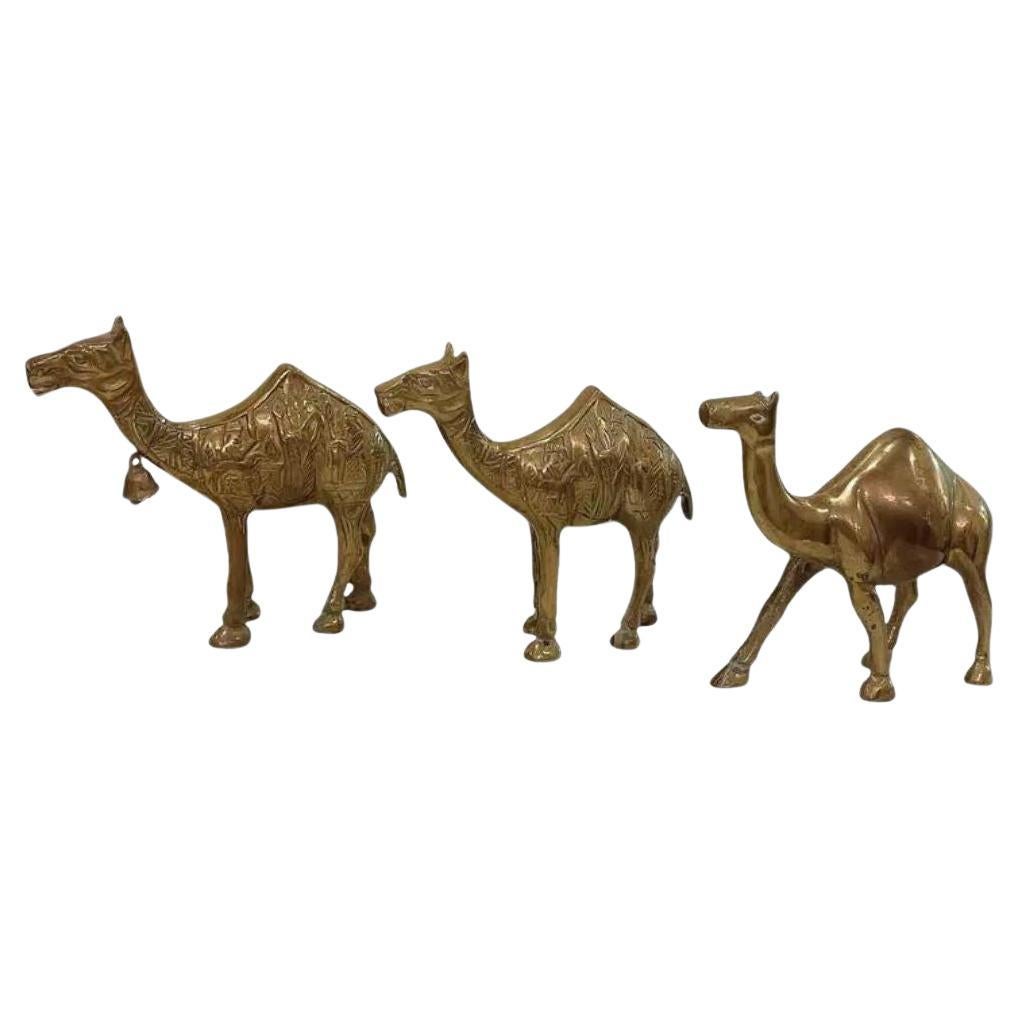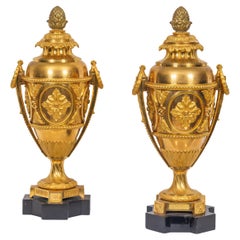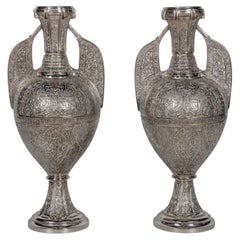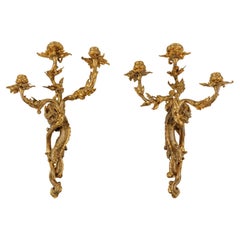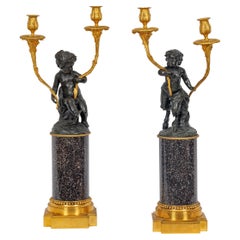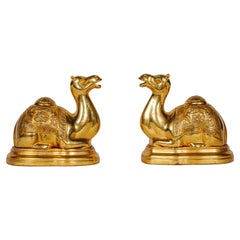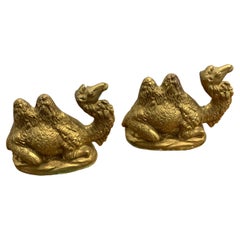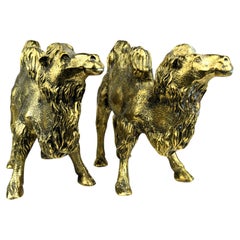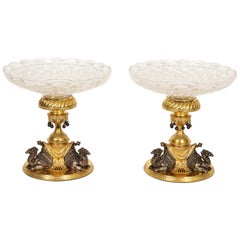Items Similar to A Pair of Opulent Sterling Silver-Gilt Camel Incense Burners, circa 1900
Video Loading
Want more images or videos?
Request additional images or videos from the seller
1 of 8
A Pair of Opulent Sterling Silver-Gilt Camel Incense Burners, circa 1900
$12,000
£9,049.19
€10,465.82
CA$16,835.94
A$18,714.19
CHF 9,809.58
MX$228,545.52
NOK 122,466.90
SEK 115,218.51
DKK 78,113.87
About the Item
A Pair of Opulent Sterling Silver-Gilt 925 Camel Incense Burners on Giltwood Stands, Circa 1900
Masterfully crafted, these pieces epitomize the grandeur and sophistication of the period, adorned with sumptuous silver-gilt that captures the majestic essence of the camels.
In Middle Eastern culture, camels hold profound significance as symbols of endurance, grace, and nobility. Revered for their role in traversing vast deserts, camels are often associated with prosperity and travel. The artistry of these burners pays homage to their esteemed place in tradition, rendering them with intricate detailing and an air of regal elegance.
Each camel is elegantly mounted on its original giltwood stand that enhance the opulence of the piece. The burners are designed not just as functional objects but as exquisite works of art, reflecting the cultural practice of incense burning—a ritual deeply ingrained in many cultures for its spiritual and purifying qualities. The act of burning incense symbolizes the elevation of the soul and the sanctification of space, resonating with a sense of tranquility and refinement.
The incense is cleverly placed inside the camels, allowing fragrant aromas to emerge gracefully through their mouths.
This pair of silver-gilt camel incense burners stands as a testament to both artistic excellence and cultural heritage. Their combination of lavish craftsmanship and symbolic significance makes them a remarkable addition to any distinguished collection, offering a touch of timeless elegance and historical depth.
Marked 925 on the bottom of the camel.
Camels: 5.5” high x 7” wide
Stands: 1.5” high
Weighs approximately 32 ounces
Very good condition. Normal wear consistent with age and use.
- Dimensions:Height: 5.5 in (13.97 cm)Width: 7 in (17.78 cm)Depth: 2 in (5.08 cm)
- Style:Anglo-Indian (In the Style Of)
- Materials and Techniques:
- Period:
- Date of Manufacture:C. 1900
- Condition:Wear consistent with age and use.
- Seller Location:Queens, NY
- Reference Number:1stDibs: LU1798241336002
About the Seller
5.0
Vetted Professional Seller
Every seller passes strict standards for authenticity and reliability
Established in 1980
1stDibs seller since 2016
63 sales on 1stDibs
Typical response time: 1 hour
- ShippingRetrieving quote...Shipping from: Queens, NY
- Return Policy
Authenticity Guarantee
In the unlikely event there’s an issue with an item’s authenticity, contact us within 1 year for a full refund. DetailsMoney-Back Guarantee
If your item is not as described, is damaged in transit, or does not arrive, contact us within 7 days for a full refund. Details24-Hour Cancellation
You have a 24-hour grace period in which to reconsider your purchase, with no questions asked.Vetted Professional Sellers
Our world-class sellers must adhere to strict standards for service and quality, maintaining the integrity of our listings.Price-Match Guarantee
If you find that a seller listed the same item for a lower price elsewhere, we’ll match it.Trusted Global Delivery
Our best-in-class carrier network provides specialized shipping options worldwide, including custom delivery.More From This Seller
View AllA Magnificent Pair of French Louis XVI Style Ormolu Vases
Located in Queens, NY
A Magnificent Pair of French Louis XVI Style Ormolu Vases
A superb pair of French Louis XVI style ormolu vases, exquisitely cast and richly decorated in the Neoclassical taste. Each...
Category
Antique 19th Century French Neoclassical Vases
Materials
Ormolu
A Magnificent Pair of Silvered Bronze "Alhambra" Vases by Tiffany Studios
By Tiffany Studios
Located in Queens, NY
A Magnificent and Large Pair of Silvered Bronze "Alhambra" Moorish Vases, by Tiffany Studios, New York.
Inspired by the medieval Spanish Nasrid, or "Alhambra," vases dating from the...
Category
Early 20th Century American Moorish Vases
Materials
Bronze
A Pair of French Japonisme Three-Light Dragon Bronze Wall Appliques, Lievre
By Edouard Lievre
Located in Queens, NY
A Pair of French Japonisme Three-Light Dragon Bronze Wall Appliques, Sconces Attributed to Edouard Lievre, circa 1870.
Exuding the opulent allure of 19th-century Japonisme, this exq...
Category
Antique 19th Century French Japonisme Wall Lights and Sconces
Materials
Bronze
A Magnificent Pair of Louis XVI Style Gilt Bronze Candelabra on Porphyry Bases
By Claude Michel Clodion
Located in Queens, NY
A Magnificent and Large Pair of French Louis XVI Style Gilt and Patinated Bronze Two-Light Candelabra after Clodion, on Swedish Neoclassical Blyberg Porphyry Bases, circa 1860.
An e...
Category
Antique 19th Century French Louis XVI Candelabras
Materials
Porphyry, Bronze, Ormolu
A Rare Pair of French Ormolu-Mounted Blue John Vases Candlesticks, C. 1870
By Matthew Boulton
Located in Queens, NY
A Rare Pair of French Ormolu-Mounted Blue John Vases / Candlesticks, C. 1870, In the stye of Matthew Boulton.
These rare and extremely elegant garnitu...
Category
Antique 19th Century French Napoleon III Vases
Materials
Ormolu
Extremely Rare Pair of Ferdinand Barbedienne Ormolu and Champlevé Enamel Vases
By Ferdinand Barbedienne, Louis-Constant Sevin
Located in Queens, NY
An extremely rare, museum quality pair of Ferdinand Barbedienne ormolu and champlevé enamel vases, circa 1870, certainly designed by Louis Constant Sevin...
Category
Antique 19th Century French Napoleon III Vases
Materials
Enamel, Ormolu
You May Also Like
A Pair of Opulent Sterling Silver-Gilt Camel Incense Burners, circa 1900
Located in Long Island City, NY
A Pair of Opulent Sterling Silver-Gilt 925 Camel Incense Burners on Giltwood Stands, Circa 1900
Masterfully crafted, these pieces epitomize the grandeur and sophistication of the pe...
Category
Antique Late 19th Century Figurines and Sculptures
Materials
Sterling Silver
Vintage Italian Gold Gilt Camel Figures, a Pair
Located in Cordova, SC
A fantastic pair of Italian gold gilt camel figurines. Marked Italy on the felted base. One of the camels has some damage to the lower neck. This is pho...
Category
Vintage 1960s Italian Hollywood Regency Models and Miniatures
Materials
Gold Leaf
$156 Sale Price / set
20% Off
Pair of Indian Brass Engraved Camels
Located in Islamabad, PK
The pair of Indian brass engraved camel sculptures is an exquisite examples of traditional Indian metalwork, combining skilled craftsmanship with artistic detailing. These sculptures...
Category
21st Century and Contemporary Indian Animal Sculptures
Materials
Brass
Pair of English Doré & Silvered Bronze Camel Centrepieces for Orientalist Market
By Elkington & Co.
Located in New York, NY
An unusual and very fine pair of antique ormolu and silvered bronze English camel centrepieces made for the Orientalist/Anglo Indian Market, Signed by Elkington. This magnificent pair of centrepieces denotes three beautifully silvered camels...
Category
Antique Mid-19th Century English Anglo-Indian Decorative Bowls
Materials
Crystal, Bronze
Pair of Cast Iron Bookends w/Camels, by Judd Co. ca. 1920
By Judd Co.
Located in Petaluma, CA
These highly detailed and colorful bookends were made by the Judd Co., one of the most respected makers of bookends in the U.S. They produced many beautiful...
Category
Vintage 1920s American Art Deco Bookends
Materials
Iron
Mid 20th Century Solid Brass Camels - Set of Three
Located in Cookeville, TN
Set of 3 embossed brass camels with great patina. These circa 1960's engraved brass camels are wonderful accents for your office, mantel or entryway console tables. Solid brass figures.
Category
Mid-20th Century Unknown Hollywood Regency Animal Sculptures
Materials
Brass
More Ways To Browse
Antique Silver Animals
Antique Silver Payal
Middle Eastern Silver
Silver Camel
Antique Sterling Silver Animals
Sterling Silver Burner
Middle Eastern Sculpture
Incense Burner Silver
Anglo Indian Camel
Indian Incense Burner
Gold Curio
Italian Ceramic Statue
Quartz Bird
Brass Bull
Camel Figure
Ceramic Parrots
Lalique Head
Rams Head Sculpture
